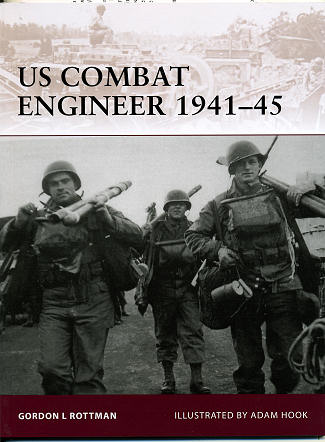 Thanks
to the Depression Era Civilian Conservation Corps (CCC), when the US had to
mobilize for WW2, there were already a considerable number of men who had
experience in engineering to some degree or another. These men were also used to
a quasi-military life style as it was the Army Corps of Engineers who were then,
as they are now, in charge of large engineering projects.
Thanks
to the Depression Era Civilian Conservation Corps (CCC), when the US had to
mobilize for WW2, there were already a considerable number of men who had
experience in engineering to some degree or another. These men were also used to
a quasi-military life style as it was the Army Corps of Engineers who were then,
as they are now, in charge of large engineering projects.
Though many of these men has served with the CCC, they
still went through basic and advanced training with the raw recruits. It was
after this training that they were promoted a bit more quickly and put in charge
of small groups and even larger units as NCOs. It was their previous training
that was highly sought and many a 2nd Lt sought their advice on how to go about
organizing the unit and taking care of mission objectives.
American combat engineers did all the same things that
the German Sturmpioneers did. They built roads, set up temporary wooden bridges
to replace those that were damaged or provided pontoon bridges when none were
available. They set up demolition charges to take out obstacles and provided
mine defusing and destruction to help pave the way clear in mine fields. They
also helped to set up tactical ground works for defensive positions and provided
emplacements for artillery.
However, there was one major difference. The US combat
engineers were highly mechanized. They had access to equipment that the Germans
could only dream about. Bulldozers, cranes, rock crushers, dump trucks and a
myriad of other vehicles were available and used.
In this book on combat engineers,
author Gordon Rottman adds to his long list of Osprey titles, covering a brief chronology of
the CCC, and the expansion of the combat engineer corps. This is followed by the concept of the
group, its role in the area and the training of the men in the unit. This is followed
by a section on recruitment and the equipment used by these men. The bulk of the
book is on life in the field as well as some of the battles that the unit was
involved in. Strictly speaking, combat engineers were not combat units, but
there were times when they were called into helping defend an area. All of this
is superbly illustrated by Adam Hook and an excellent collection of period
photographs.
In all, another excellent book on one of the more
interesting units of WWII.
July 2010
For more on the complete line of Osprey books,
visit www.ospreypublishing.com. In the US, it is
Osprey Direct at 44-02 23rd St, Suite 219, Long Island City, NY 11101., where you can
get a catalogue of available books.
If you would like your product reviewed fairly and quickly, please
contact
me or see other details in the Note to
Contributors.
 Thanks
to the Depression Era Civilian Conservation Corps (CCC), when the US had to
mobilize for WW2, there were already a considerable number of men who had
experience in engineering to some degree or another. These men were also used to
a quasi-military life style as it was the Army Corps of Engineers who were then,
as they are now, in charge of large engineering projects.
Thanks
to the Depression Era Civilian Conservation Corps (CCC), when the US had to
mobilize for WW2, there were already a considerable number of men who had
experience in engineering to some degree or another. These men were also used to
a quasi-military life style as it was the Army Corps of Engineers who were then,
as they are now, in charge of large engineering projects.